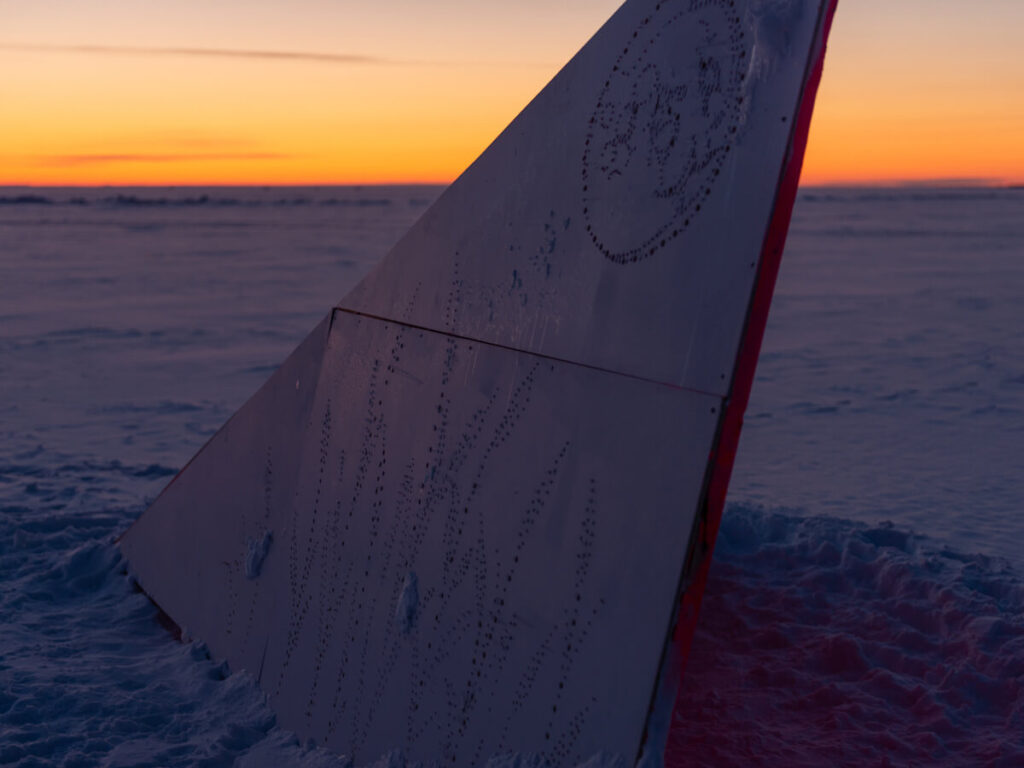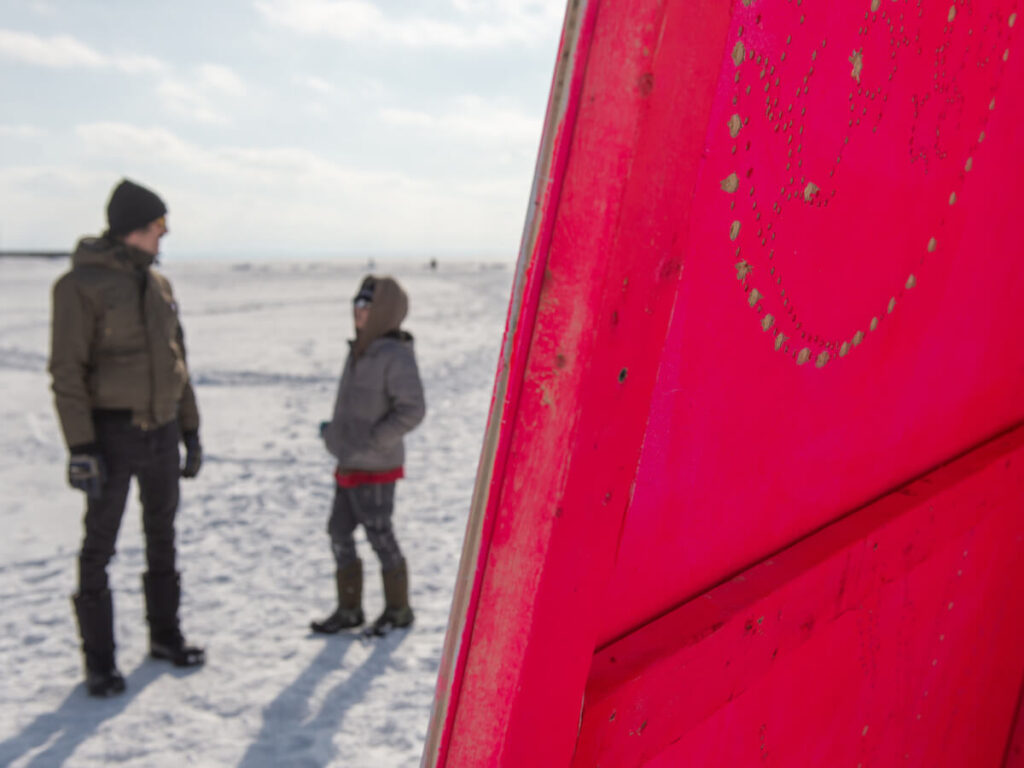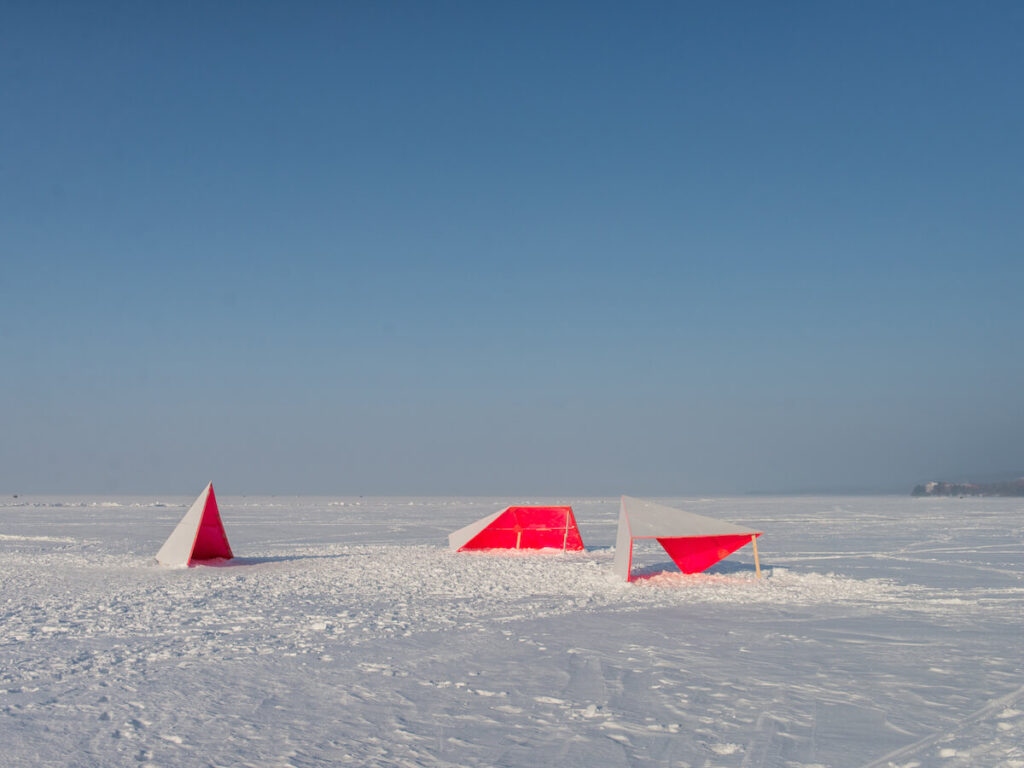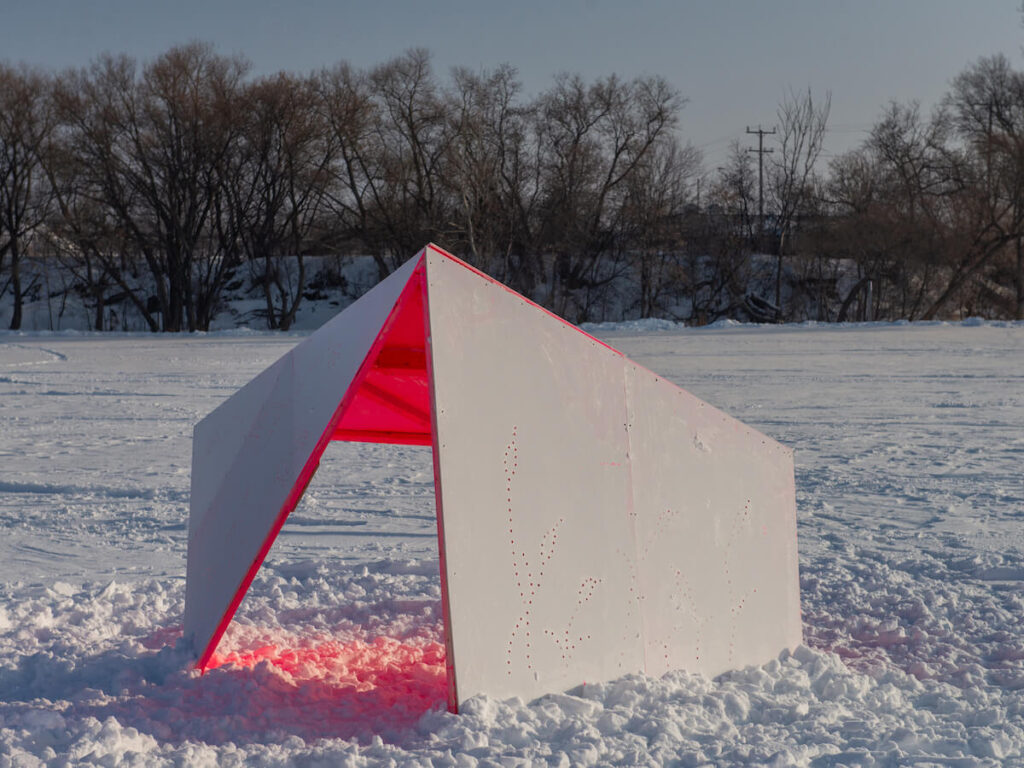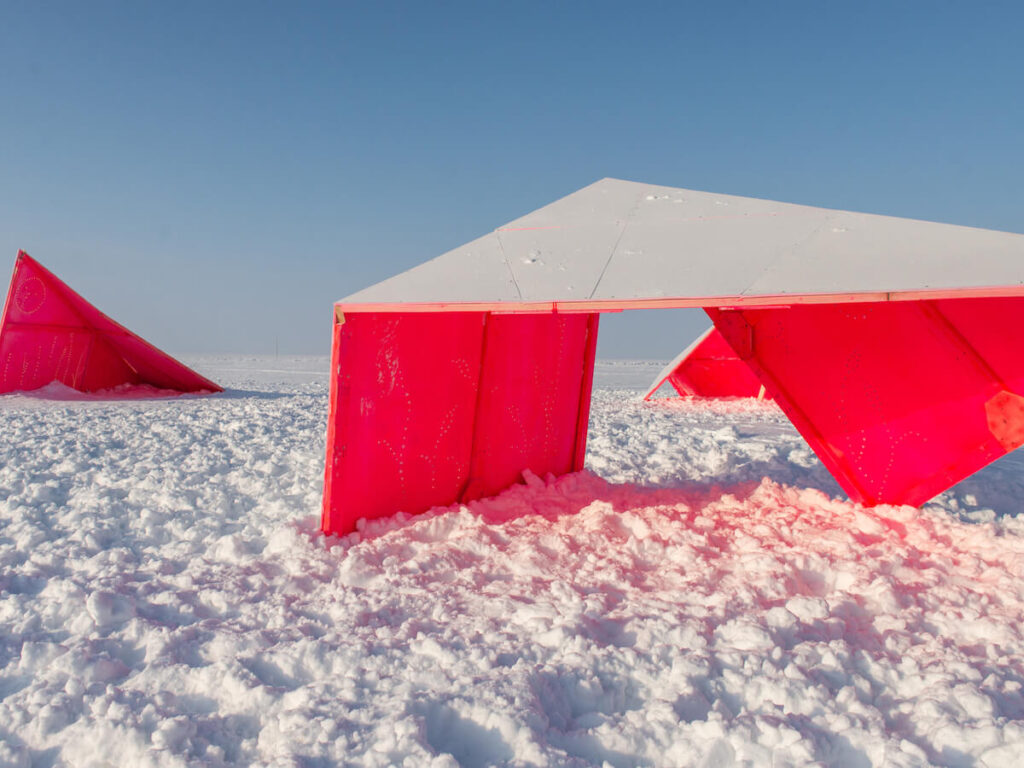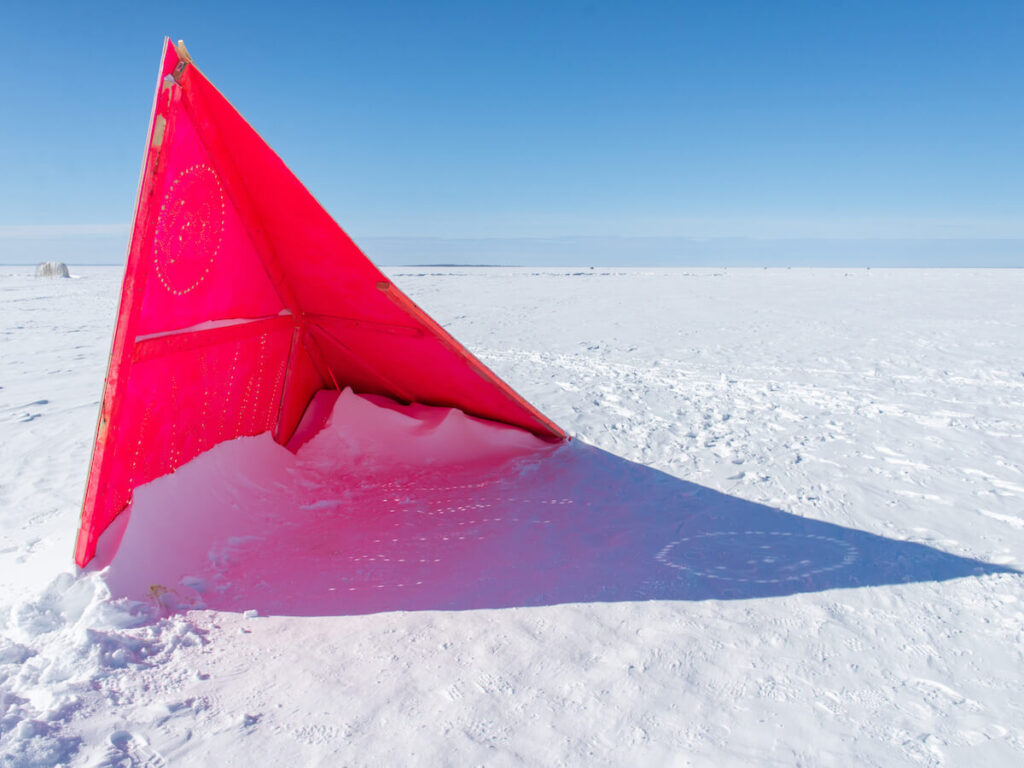Ice Follies 2020
February 15th - 29th, 2020
THEME: MKOMIIWI: (BE ICE, TURN TO ICE, BE COVERED IN ICE, BE ICY)
Exploring that transformation from water to ice and from one realm to another. As we shift and adapt new worlds are opened and old pathways disappear. Our mode of travel changes. Ice heaves form from prevailing winds. Ice is pushed up against itself, the shore.
Destiny Swiderski, Refract : REFLECT, 2020
Presented by White Water Gallery
Refract : REFLECT is an experiential installation of architecture, local Indigenous narratives, and the natural elements of light, sound, ice and snow. As ice turns back into water, the tectonic ice plates collide to create a geometry of form, light and shadow; creating an intimate gathering space for viewers to contemplate, interact and meet. Deeply rooted within its context, the natural phenomena of the ice jamming effect is shaped by shards reaching out of the lake by the seemingly forces of nature, while providing sight lines to the nearby Manitou Islands, Nipissing First Nation and the downtown of North Bay.
Community collaboration is celebrated as local knowledge holder, Carol Guppy and Artist Amanda Bellefeuille from Nipissing First Nation share their stories of the significance of the bear, moon cycle and its relationship to this territory. Generated from Amanda’s beadwork, the projected images were fabricated and installed by local community members and artists. The ever-changing filtered winter light penetrates through the perforated holes, creating a cinematic shadow dance of these stories into the vibrant interior of each structure.
As natural acoustics from the wind and voices can be heard through the shelter, viewers are encouraged to stand, sit, crawl and lie down to get the full embodied experience of space and time. At night, the installation transforms into a beacon of refracted light as the vibrant interior provides a sense of warmth, evoking memory, while absorbing the hues of the sunset. Winter is a special time to reflect, gather, and share stories of where we live, who we are and how we are all connected to the land.
Artist Bio
Destiny Swiderski is a Vancouver Island based Métis interdisciplinary architectural designer, artist, public speaker and educator. Destiny is of Cree and Ukrainian decent and has family from Frog Lake First Nation in Alberta. During her architectural education at the University of Manitoba, she explored ideas around place-making, phenomenology, and spatial experiences. In 2010, she experimented with sculpture and installation techniques at the Ontario College of Art and Design in Toronto. Her interest in how architecture and art become related is where her career in public art began as she won 3 national commissions with the City of Edmonton. Her first public art commission was a temporary artwork called Dream Catcher (2012). This 4,000 square foot dream catcher was designed and installed on a vacant piece of land in the inner city of downtown Edmonton. Working with one material in repetition became of interest to Destiny as she wanted to explore meditative qualities of this kind of process as it reminded her of Indigenous beadwork that she did as a child in her home town of Selkirk, Manitoba. Milled Wood (2015) became the ultimate test of this repetitious process as off-cuts of 2×4 spruce were cut, sanded, and stained to reproduce an optical illusion of Mill Creek Ravine in Edmonton. Immersing the viewer in a sensory experience – walking along trails wrapped by dense deciduous trees. Extensive mapping techniques were used to plan and organize more than 8,400 wood “pixels”. Each tells its own story of time place, and growth. The mural’s construction also has an auditory effect – the different wall thicknesses create “sound pockets” within the space. The project was nominated for a Prairie Design Award. In 2016, Destiny completed Amiskwacîw Wâskâyhkan Ihtâwin, a 120 foot sculptural mural made up of 152 copper silhouettes. Local bohemian wax-wing birds in all stages of flight were decorated with storytelling patterns created in artist-led Indigenous community workshops. Knowledge holders and Elders supported the project by providing the syllabics and translation for the signage. Giving hierarchy to the Cree language expressed the Indigenous roots of this special place; a place to gather and share stories about the past, present, and future. This work was celebrated as it won an American Arts Award for best places-making in an urban context. These artist-led workshops were of key interest to continue on the path of exploring community engagement techniques and teachings as Destiny created Swiderski architecture + art KIDS.- an after school architecture program for youth ages 5-15. For the next 3 years, she taught children about the fundamentals of architecture through the process of art-making. Ideas around site, genius loci, perspective drawing, model making and playground design were all explored in these programs. All of these experiences has made Destiny’s architecture and artistic practice into a diverse and inclusive approach to design and art. She wishes to continue on with Public Art for a vehicle for building capacity within the Indigenous communities around Canada and abroad, as her new work explores ideas of how to take traditional Indigenous crafts and turn them into contemporary pieces of architecture.
Image Gallery:


